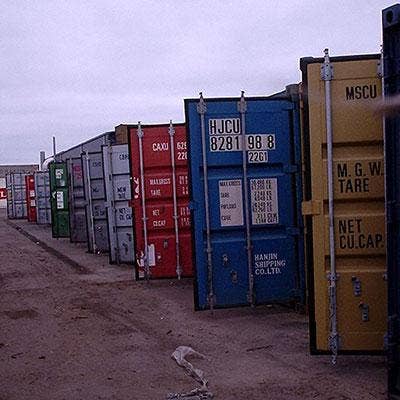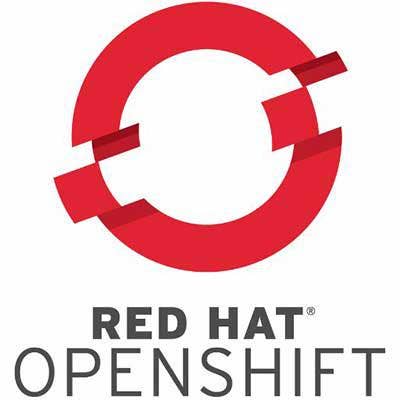5 Takeaways From Red Hat Summit 2017

Enterprise Technology In 2017
This year's Red Hat Summit, held this week in Boston, has been a feast of information about enterprise application development, IT automation, containers and microservices. All of which are heavily intertwined, of course. Where do things stand with these technologies and their market penetration? To find out, we attended a number of keynotes and panels featuring Red Hat executives -- including CEO Jim Whitehurst (pictured) -- and also sat down with the head of Red Hat's technology and products organizations, Paul Cormier. In the following slides, we've rounded up our biggest takeaways from Red Hat Summit 2017.

Containers Are Officially Mainstream
A key message from Red Hat this week reads as follows: "Containers in production are real on Red Hat OpenShift." Red Hat executives say it appears that the company has enabled more production deployments of containers than any other vendor -- including Docker itself -- through its OpenShift Platform-as-a-Service. And customers that have deployed containers into production with OpenShift include some big names -- Cisco, Disney and Deutsche Bank among them. "You need a production-ready environment to really start to deploy [containers] and bet your business on it, and we're the only one that's proved we can do that," Cormier told CRN this week. "We've shown you some of the biggest companies in the world that are running our containers in production."
Meanwhile, most of Red Hat's product announcements this week have revolved around containers, including OpenShift.io, an online development environment for creating container-based apps. Clearly, Red Hat is hoping to put to rest the notion that containers are not yet ready for prime time.

The Battle Over Monetizing Containers Is Heating Up
Incidentally, while Red Hat was making announcements about new container-related products and services this week, Docker was making some moves of its own. The company named former Concur chief executive Steven Singh (pictured) as its new CEO, as part of a bid to generate more business from its container platform for enterprises. The competition over making money from containers will only get fiercer from here, and Red Hat is not shying away from emphasizing its differentiators. "You have to be a commercial Linux vendor in order to credibly do containers," Cormier told CRN. "[Docker's] solution is for the end user, the customer, to build their own kernel. That's not enterprise-ready. That's not how enterprises roll."
Another difference between Docker and Red Hat OpenShift that came up this week: Red Hat uses the open-source Kubernetes for container orchestration, while Docker's products have their own built-in orchestration. During the conference this week, Red Hat executives argued that Kubernetes is destined to become the standard. It feels like Kubernetes is "over the hump" and on its way to becoming the go-to format, said Scott McCarty, senior strategist for containers at Red Hat. "Kubernetes has reached that tipping point" that OpenStack previously reached in open-source cloud computing, McCarty said. "We'll remember the other names, but fondly look back at them."

IT Automation Is Entering A New Phase
While enterprises have been pursuing IT automation for decades, there are some indicators that its promise is finally starting to be fulfilled. Joe Fitzgerald, vice president of management at Red Hat, contends that the company's Ansible product represents "a paradigm shift in IT automation." The product differentiates by offering new levels of simplicity for automation -- meaning that it's not solely for engineers, he said. Ansible lets enterprises "automate across more domains than [they've] ever been able to automate before," Fitzgerald said -- including compute, network, storage, containers, cloud and more. Red Hat is positioning Ansible as an orchestration tool that can work with configuration management from the likes of Puppet and Chef, said Justin Nemmers, senior manager of product marketing for Ansible.
Still, enterprises must take care to ensure they have the right controls in place when doing IT automation, or else they can "automate bad things really quickly," Fitzgerald said. In addition, some in IT may not want to see automation in order to "protect their franchise," he said. "This process of automation is going to change and break down those silos, and that's not going to be without pain for organizations that are going through this. … [But] if you don't do it, your competitors will."

Microservices Aren't The Answer For Everyone
Taking an app and breaking it up into numerous discrete services -- i.e., microservices -- can be a smart move for some enterprises. But maybe not all of them. The more that you rely on microservices, the more complexity you will be building into the system, said Harry Mower, senior director for developer programs at Red Hat. "It can introduce a new set of problems," Mower said. "I'd caution people about jumping into microservices. There are plenty of viable reasons to do [apps] as monolith. And if an app is already running and working, you don't want to mess with something that's good."
That's not to say that Red Hat isn't bullish on microservices, though. The company this week introduced OpenShift Application Runtimes -- pre-built runtime foundations -- with the goal of faster development of microservices across hybrid clouds.

Companies Need To Enable More Experimentation
During his keynote at the Red Hat Summit Wednesday, CEO Whitehurst argued that most companies aren't organized properly to empower individual employees to innovate. Companies today are largely organized the same way they were 150 years ago, where a small group of decision-makers plan and prescribe actions to try to reach some ideal future state, Whitehurst said. "That works fine in a static, stable environment" where there is a "good sense of what the future might be," he said. "But as the world begins to move faster, and becomes more ambiguous, our ability to predict the future is becoming less and less."
What companies need to do instead is work more the way that open-source projects work -- by creating context for individuals to try new things, and then modify and fix problems that arise, Whitehurst said. "Organizations that figure out how to do this at size and at scale -- create the context that allows individuals to act in a collective way -- are the organizations that will be successful in the 21st century," he said.